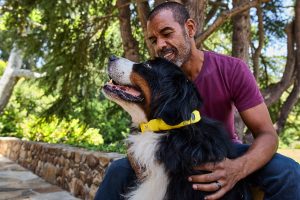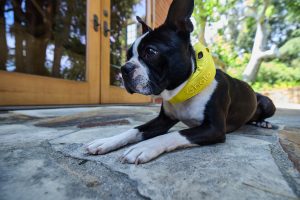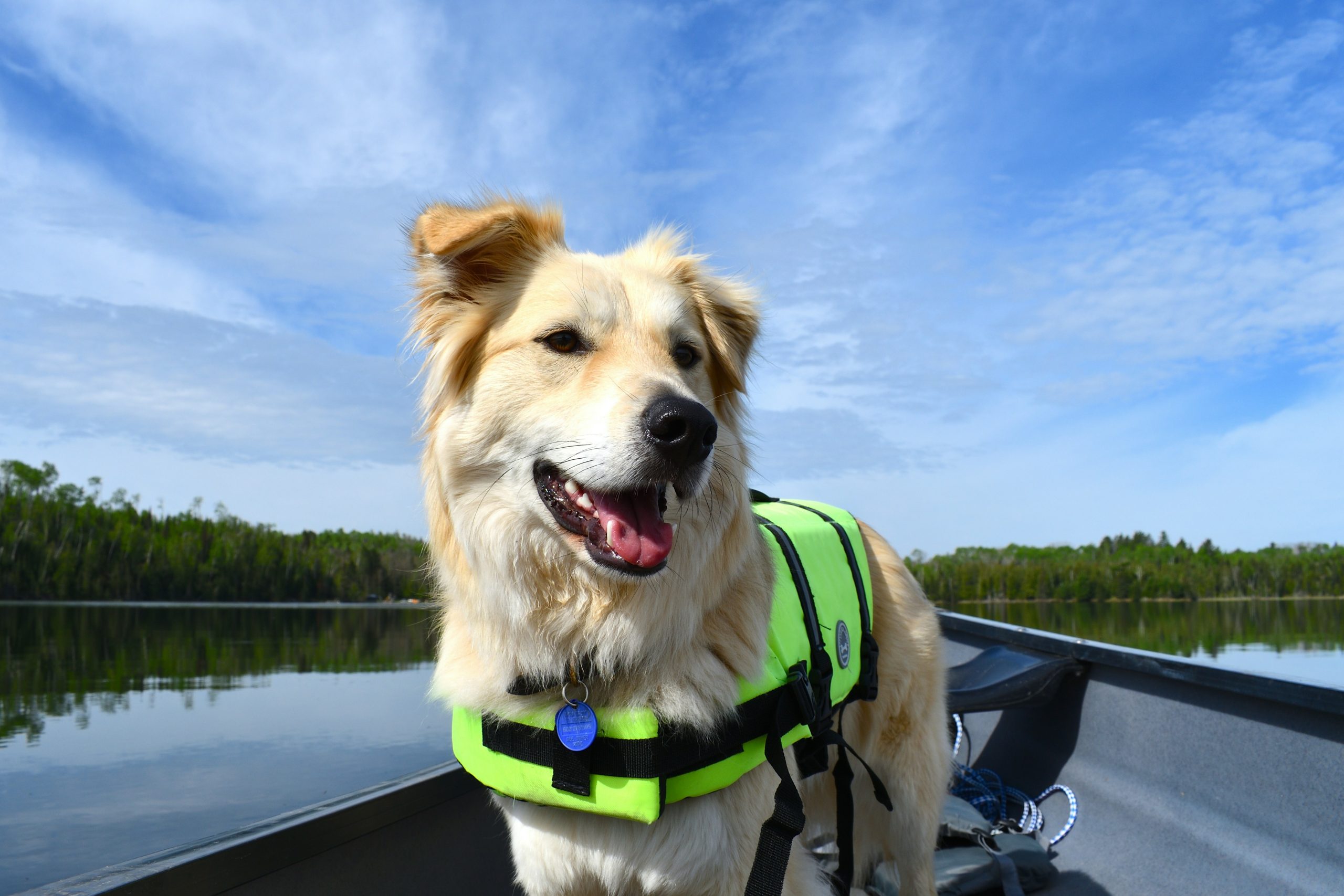
Dogs face real risks in water that proper safety equipment can prevent – even when they appear confident and excited to swim.
Not all dogs are natural swimmers. Bulldogs, Pugs, and breeds with large chests struggle to stay afloat due to their body structure. Even strong swimmers like Labrador Retrievers can tire in rough water or cold temperatures. Strong currents, underwater debris, and medical emergencies pose risks for all dogs in water.
Life jackets provide essential protection through buoyancy support, enhanced visibility, and emergency handling features. Their bright colors make dogs easier to spot, while grab handles enable quick retrieval if needed. Just as we protect children with proper water safety measures, dogs need similar consideration during water activities.
What Features Should You Look for in a Dog Life Jacket?
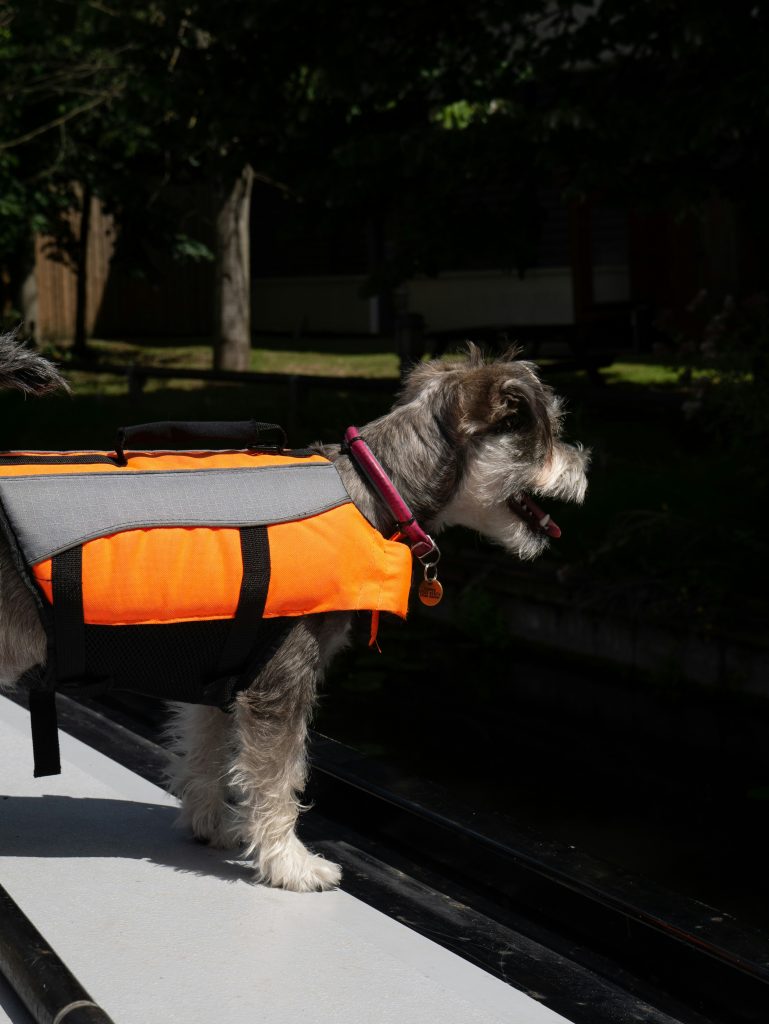
Choosing the right life jacket for your dog requires understanding key features that combine safety with comfort. The best dog life jackets ensure your dog stays afloat while maintaining freedom of movement. Here are the essential features to consider when selecting a life jacket for your dog.
1. Buoyancy – The Non-Negotiable Feature
Proper flotation is the most critical aspect of any dog life jacket. Strategic foam panel placement under the chest and neck naturally elevates your dog’s head above water. A well-designed jacket allows dogs to swim confidently without struggling to keep their muzzle dry.
2. High-Visibility Colors and Reflective Elements
Water safety demands visibility. Bright orange, yellow, or red jackets stand out against water and natural surroundings. Studies show neon colors can be spotted from further distances, especially in choppy conditions. Reflective strips enhance visibility in both daylight and darkness.
3. Sturdy Rescue Handle
A robust handle positioned along the back serves multiple crucial purposes. It enables lifting your dog from the water in emergencies and provides control when teaching swimming. The handle should feature reinforced stitching to support your dog’s full weight.
4. Adjustable Fit System
Quality life jackets feature multiple adjustment points around the neck, chest, and belly. The straps should be wide enough to distribute pressure and prevent chafing. For proper fit, you should be able to fit two fingers beneath the straps.
Jackets with at least three adjustment points better accommodate dogs with unusual proportions, especially deep-chested breeds like German Shepherds and Boxers.
5. Freedom of Movement
A proper life jacket allows natural swimming motion without restriction. Look for designs with open areas around the shoulders and legs. The jacket should provide full torso coverage while maintaining mobility. Some newer models feature flexible panels that contour to your dog’s body, reducing fatigue during longer swims.
6. D-Ring Attachment Points
A secure metal D-ring provides a convenient leash attachment point for water approaches or boat rides. Choose metal over plastic for durability, positioned where it won’t interfere with swimming.
7. Quick-Release Buckles
Safety-focused buckles allow for fast removal in emergencies while staying secure during use. The best designs can be operated with one hand but won’t accidentally release during activity. Choose corrosion-resistant materials for water durability.
8. Durability for Water Adventures
Look for ripstop nylon or high-denier polyester that resists tears and abrasions. Reinforced stitching at connection points prevents failure under stress. Choose materials rated at 400-denier or higher for lasting protection.
Your dog’s safety depends on proper fit and appropriate features. A well-designed life jacket offers peace of mind while allowing safe water enjoyment. Take time to measure your dog accurately and select a jacket meeting these essential criteria.
When Should Your Dog Wear a Life Jacket?
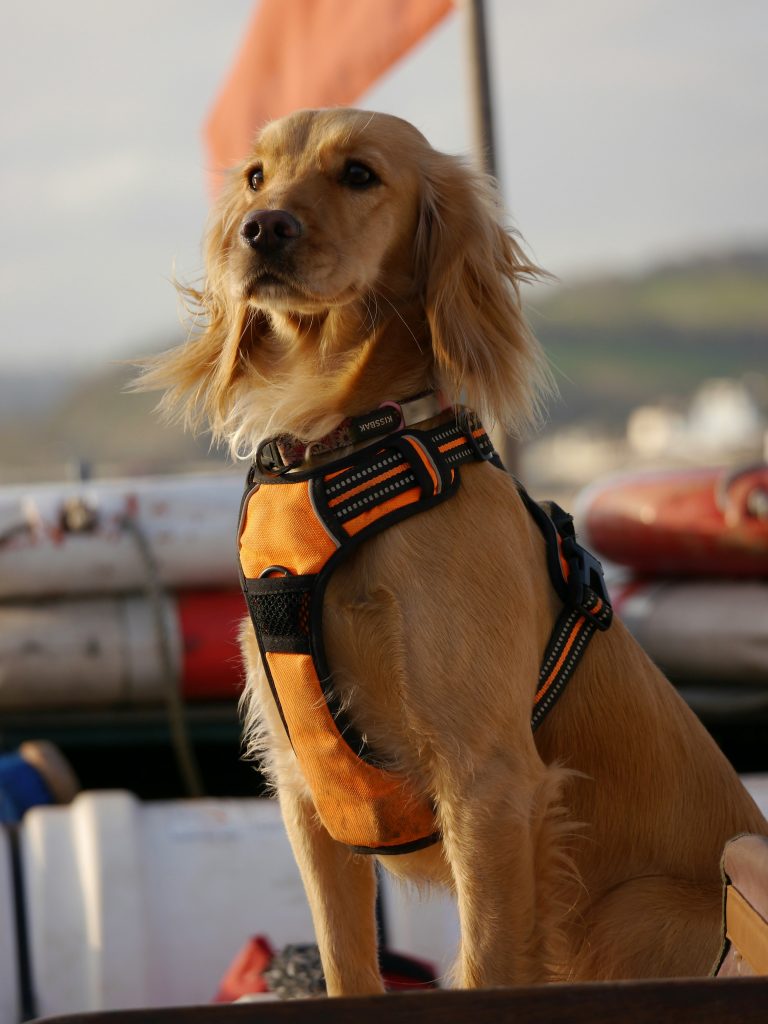
Safety around water isn’t optional for dogs. While most dogs naturally paddle in water, this instinct doesn’t guarantee their safety in all aquatic environments. Understanding when your dog needs extra protection can prevent dangerous situations.
Boating Adventures
Dogs should always wear life jackets while on boats, kayaks, canoes, or paddleboards—regardless of water conditions or swimming ability. Boats can capsize, dogs can jump overboard, and accidents happen instantly.
Even experienced water-loving breeds like Labradors or Portuguese Water Dogs benefit from the security and visibility of a properly fitted life jacket. The built-in handle enables quick retrieval if your dog goes overboard.
Natural Bodies of Water
Lakes, rivers, and oceans pose unique challenges that even strong swimmers may struggle with. Swift currents, sudden drop-offs, underwater obstacles, and changing tides create unpredictable conditions. A life jacket provides crucial buoyancy when encountering these hazards.
Ocean swimming requires extra caution. Salt water is more physically demanding than fresh water. The combination of waves, currents, and changing depths makes a life jacket essential for ocean adventures.
Pool Time Protection
Home pools require precaution too. Dogs new to swimming, senior pets, breeds with low body fat or short legs, and dogs recovering from illness or surgery should wear life jackets during pool time. The jacket builds confidence while providing support.
Brachycephalic breeds like French Bulldogs and Pugs often struggle to keep their faces above water due to their facial structure. These breeds especially benefit from the buoyancy a life jacket provides.
First-Time Swimmers
A life jacket creates a positive first experience for dogs learning to swim. The buoyancy helps them focus on getting comfortable rather than struggling to stay afloat, building water confidence gradually.
Dogs experiencing water for the first time may panic, leading to exhaustion or drowning. The jacket provides physical and psychological support during this learning phase.
Extended Water Play
Dogs can overestimate their endurance in water. Unlike humans, they rarely recognize fatigue until it’s dangerous. During lengthy water sessions, a life jacket helps conserve energy and prevents exhaustion.
This applies especially to high-energy dogs who might not show obvious signs of tiring while playing. The life jacket serves as insurance against sudden fatigue.
Medical Considerations
Dogs with health conditions need additional support in water. Arthritis, hip dysplasia, previous injuries, or neurological conditions can affect swimming ability. Life jackets reduce strain on joints while allowing safe water enjoyment.
Senior dogs benefit particularly from life jackets, as aging can diminish swimming strength and stamina.
Weather and Water Conditions
Cold water temperatures pose additional risks. Dogs can experience hypothermia more quickly than humans, and some life jackets offer insulation that helps maintain body temperature. Rough waters or windy conditions increase the importance of proper safety equipment.
Remember that a life jacket never replaces supervision. Always keep your dog within reach when in or around water, regardless of safety gear. The jacket provides an additional layer of protection, not a substitute for vigilant monitoring.
How to Properly Fit and Introduce a Life Jacket to Your Dog
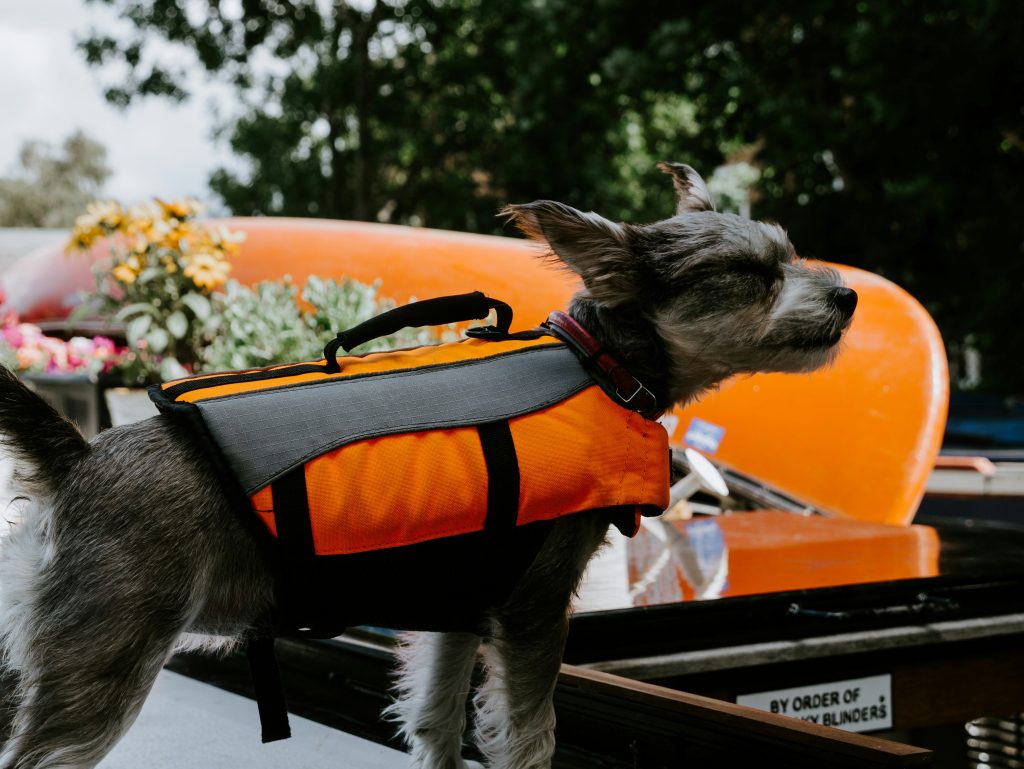
A life jacket provides essential water safety for your dog, but proper fit and introduction are crucial for success. With patience and positive reinforcement, your dog can learn to accept and feel comfortable wearing this important safety gear.
Measuring Your Dog for the Perfect Fit
Accurate measurements ensure your dog’s life jacket fits properly, preventing chafing and maintaining safety in water. Use a soft measuring tape to record these measurements:
- Neck circumference: Measure around the base of your dog’s neck where a collar typically sits
- Chest girth: Measure the widest part of your dog’s ribcage, usually just behind the front legs
- Back length: Measure from the base of the neck to the base of the tail
Compare measurements against manufacturer sizing charts. When between sizes, choose the larger option for adjustability.
The Introduction Process: Building Comfort Step by Step
Help your dog adjust to their life jacket with these steps:
- Start at home: Begin in a familiar, calm environment where your dog feels secure.
- Let them investigate: Allow your dog to sniff and examine the life jacket at their own pace.
- Create positive associations: Offer high-value treats and praise when your dog shows interest.
- Try a partial fitting: Drape the jacket loosely over their back without fastening straps, offering treats throughout.
- Build duration gradually: Increase wearing time with the unfastened jacket, rewarding calm behavior.
- Secure one strap at a time: Fasten straps gradually across multiple sessions.
- Practice indoor movement: Let your dog walk around the house wearing the fully secured jacket before water activities.
This process may take days or weeks depending on your dog’s temperament, but proper introduction ensures long-term success.
Checking for Proper Fit
Verify these fit points for safety and comfort:
- Strap tightness: Two fingers should fit between straps and your dog’s body
- Freedom of movement: Your dog should move, sit, and lie down easily
- No chafing points: Check legs, neck, and belly areas
- Buoyancy padding position: Flotation material should remain stable on back and sides
- Handle positioning: The grab handle should center on your dog’s back
Troubleshooting Resistance
If your dog resists the life jacket, try these approaches:
- Slow down the process: Take smaller steps and progress gradually
- Use higher-value rewards: Offer premium, special-occasion treats
- Pair with enjoyable activities: Incorporate the jacket during playtime or meals
- Consider comfort additions: Add soft fabric sleeves to potentially rubbing straps
- Stay calm: Maintain a relaxed attitude throughout training
Maintenance and Check-ups
Before water activities, inspect:
- All straps and buckles for wear
- Flotation material positioning
- Handle security
- Fit adjustments needed due to weight changes
A properly fitted and introduced life jacket ensures both safety and comfort during water activities, allowing your dog to enjoy aquatic adventures with confidence.
Conclusion: Ensuring Your Dog’s Water Safety With the Right Life Jacket
A quality life jacket prevents drowning while building confidence for both you and your dog. Features like secure straps, adequate flotation, and a sturdy rescue handle create the foundation for safe aquatic experiences. This investment protects against exhaustion, strong currents, and unexpected accidents that can affect even the strongest swimmers.
While a reliable life jacket is crucial, remember that active supervision remains your most important safety measure when your dog is near water. The Halo Collar can further enhance safety by providing GPS tracking and wireless fencing, helping you stay connected and aware—even during off-leash water adventures.
Interested in exploring more common canine safety concerns? Visit our dog safety page for expert tips and advice on a wide range of topics.
